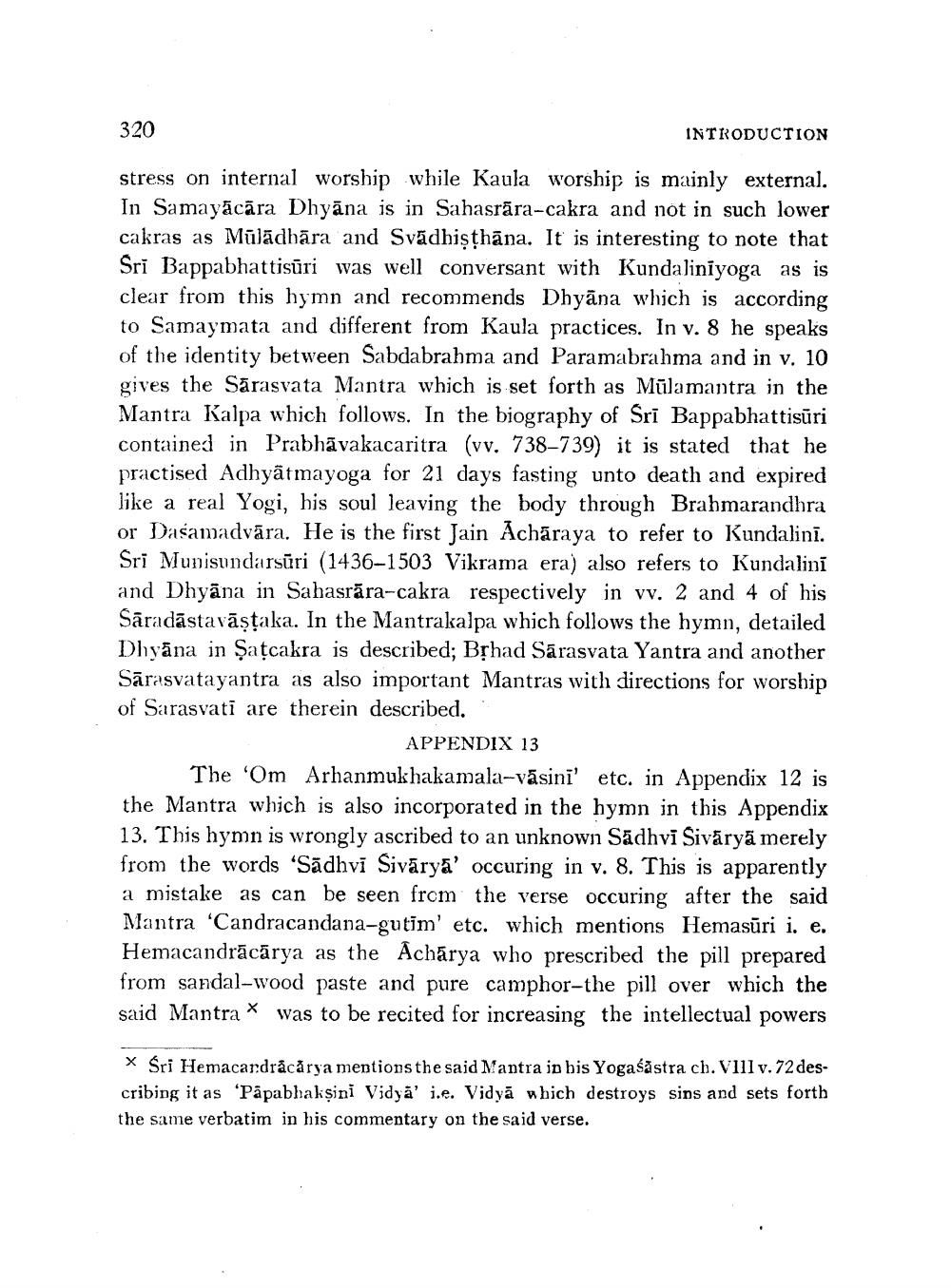________________
320
INTRODUCTION
stress on internal worship while Kaula worship is mainly external. In Samayācāra Dhyāna is in Sahasrāra-cakra and not in such lower cakras as Mūlādbāra and Svadhisthāna. It is interesting to note that Sri Bappabhattisūri was well conversant with Kundaliniyoga as is clear from this hymn and recommends Dhyāna which is according to Samaymata and different from Kaula practices. In v. 8 he speaks of the identity between Sabdabrahma and Paramabrahma and in v. 10 gives the Sārasvata Mantra which is set forth as Mūlamantra in the Mantra Kalpa which follows. In the biography of Sri Bappabhattisūri contained in Prabhāvakacaritra (vy, 738-739) it is stated that he practised Adhyatmayoga for 21 days fasting unto death and expired like a real Yogi, his soul leaving the body through Brahmarandhra or Dasamadvāra. He is the first Jain Achāraya to refer to Kundalini. Sri Munisundarsūri (1436-1503 Vikrama era) also refers to Kundalini and Dhyāna in Sahasrāra-cakra respectively in vv. 2 and 4 of his Sāradāstavāstaka. In the Mantrakalpa which follows the hymn, detailed Dhyāna in Şaţcakra is described; Bșhad Sarasvata Yantra and another Sārasvatayantra as also important Mantras with directions for worship of Sarasvati are therein described.
APPENDIX 13 The 'Om Arhanmukhakamala-vāsini' etc. in Appendix 12 is the Mantra which is also incorporated in the hymn in this Appendix 13. This hymn is wrongly ascribed to an unknown Sadhvi Siväryä merely from the words “Sādhvi Sivāryā' occuring in y. 8. This is apparently a mistake as can be seen from the verse occuring after the said Mantra 'Candracandana-gutim' etc. which mentions Hemasūri i. e. Hemacandrācārya as the Acharya who prescribed the pill prepared from sandal-wood paste and pure camphor-the pill over which the said Mantra was to be recited for increasing the intellectual powers
x Sri Hemacardråcărya mentions the said Mantra in bis Yogaśāstra ch. Vill v.72 describing it as 'Pāpabhaksini Vidya' i.e. Vidyā which destroys sins and sets forth the same verbatim in his commentary on the said verse.




